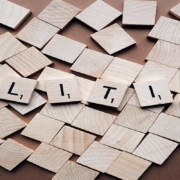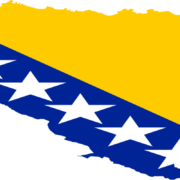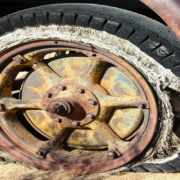The more things change: voters send a message in Croatia’s local elections
As much as it was out with the old and in with the new, Croatia’s May local elections whose second round ended on May 30 was a repeat of previous elections. Voters again sent a clear message they are willing to back credible alternatives to incumbents. Despite this, the Croatian Democratic Union (HDZ) which forms the backbone of the national government, is still in a dominant position.
Voters want results
For all intents and purposes, these local elections essentially saw the Croatian Peasants’ Party (HSS) and Croatian Peoples’ Party (HNS) disappear from the political scene. The biggest surprise was that the hegemon of Istria, the Istrian Democratic Assembly (IDS) lost the mayoralty of the Istrian county capital Pazin and, more importantly that of the largest city Pula to the Social Democrats (SDP) and an independent candidate respectively. The party’s leading figure also barely managed to hang onto the role of County prefect by a mere 54 votes. In addition, across the country the careers of many big names ended as voters found fresher, more credible candidates to support.
Thus, a longstanding Croatian tradition of giving new parties a chance remains in place.
Split and Zagreb under new management…
The races for mayor of Zagreb and Split, the two largest cities, received most attention. Understandably so, given the sudden death of long-serving Zagreb mayor Milan Bandić at the end of February and the retirement of the incumbent from the HDZ in Split due to health reasons. In Zagreb, the green/left option Možemo fell one seat short of an absolute majority in the city assembly. Its mayoral candidate Tomislav Tomašević won almost two thirds of the vote in the run-off. Expectations are high, but so are the challenges, after Bandić’s lengthy stay in office.
Split has historically been more willing to change its mayor and this time opted for Ivica Puljak, of the newly formed Centar party. Although politically active since 2015 with his previous party Pametno, Puljak faces a more challenging task in securing and maintaining a majority in the Split City Assembly compared to Možemo.
…and facing difference challenges
Možemo began as an activist, green grouping focussed on Zagreb and last year began transforming into a political party, when they entered parliament. In May’s local elections they ran candidates in eight cities and apart from Zagreb achieved notable results in Istria and Dubrovnik. Here it is important to note that in all these places, left of centre options traditionally do well – Andro Vlahušić, for example, was mayor of Dubrovnik at the time when the HNS was a left of centre party.
Thus, Croatia’s two largest cities will be run by political groupings which are almost entirely new. Both results represent a shift to the left relative to the previous administrations. The main question is whether Možemo and Centar can develop into properly structured political parties with clear policies and values. This is far from a trivial matter. The experience of the conservative party MOST is instructive here. Twice a member of ruling coalitions at national level, MOST was unable either time to deal with the requirement of politics to seek common ground and determine why and where to compromise. Both their spells in government lasted less than half a term.
Can Možemo and Centar build on electoral success?
Možemo and Centar are in different positions but will still need to produce results. Should they succeed, they will face the challenge of scaling up their activities. Success would bring more members, each with expectations. How to manage those expectations and develop an infrastructure to form the basis of a larger political party will determine whether Možemo and Centar develop into longer-term, credible political actors or go the way of the HSS, HNS and before them HSLS, HSP (various incarnations), the green party OraH, Laburisti, Demokratski centar and others into minor roles or political oblivion.
Only that way will they be able to attract and develop a diverse core of political talent necessary to convince voters there is a viable alternative to drive policy and strategic debate in the country. For all the excitement various candidates created, welcome as that is, the bedrock of a democracy is the political party.
HDZ remains the dominant political party
Of all of Croatia’s political parties HDZ has had the most success in adapting as Croatia has changed. The party today is closer to the centre, as demonstrated by the collection of parties to its right, many of whose leading lights were once in the HDZ. As the largest party it also has a deeper pool of talent. This, and the infrastructure associated with larger parties is why when we look at the results of the local elections, the HDZ won far more mandates than even its nearest rival.
Therein lies the main risk medium and longer term for Croatia’s political scene. One party, essentially not facing genuine, organised, focussed opposition is never an ideal characteristic for a democratic political system.
Looking for the holy grail on the left
For 30 years the holy grail of Croatian politics has been to construct a credible political force left of centre as a counter to the HDZ’s dominant position right of centre. On the left that has never been one party, always more of them. The main issue is whether the Social Democrats remain the core left of centre party, or someone replaces them, as The Social Liberals (HSLS) of centre-left persuasion did in the 1990s. And, while HDZ has traditionally performed well in local and regional elections compared to the SDP, elections at national level are different.
Green parties, a relatively new concept here, stand to profit from current trends in Europe. In any event Možemo currently appears better placed than Centar. That said, it will have to decide at some point whether it will pursue a realpolitik course closer to that of the German Greens or opt for a more radical left approach like Greece’s Syriza. Time will tell which factions within Možemo prevail. Either way, the Social Democrats have two underappreciated strengthens. – their relative size (they are the second largest party in the country) and their settled party organisation/structure, something all parties seeking to displace HDZ or SDP lack to the same degree. Those, in the longer-term are their collective weak points.









